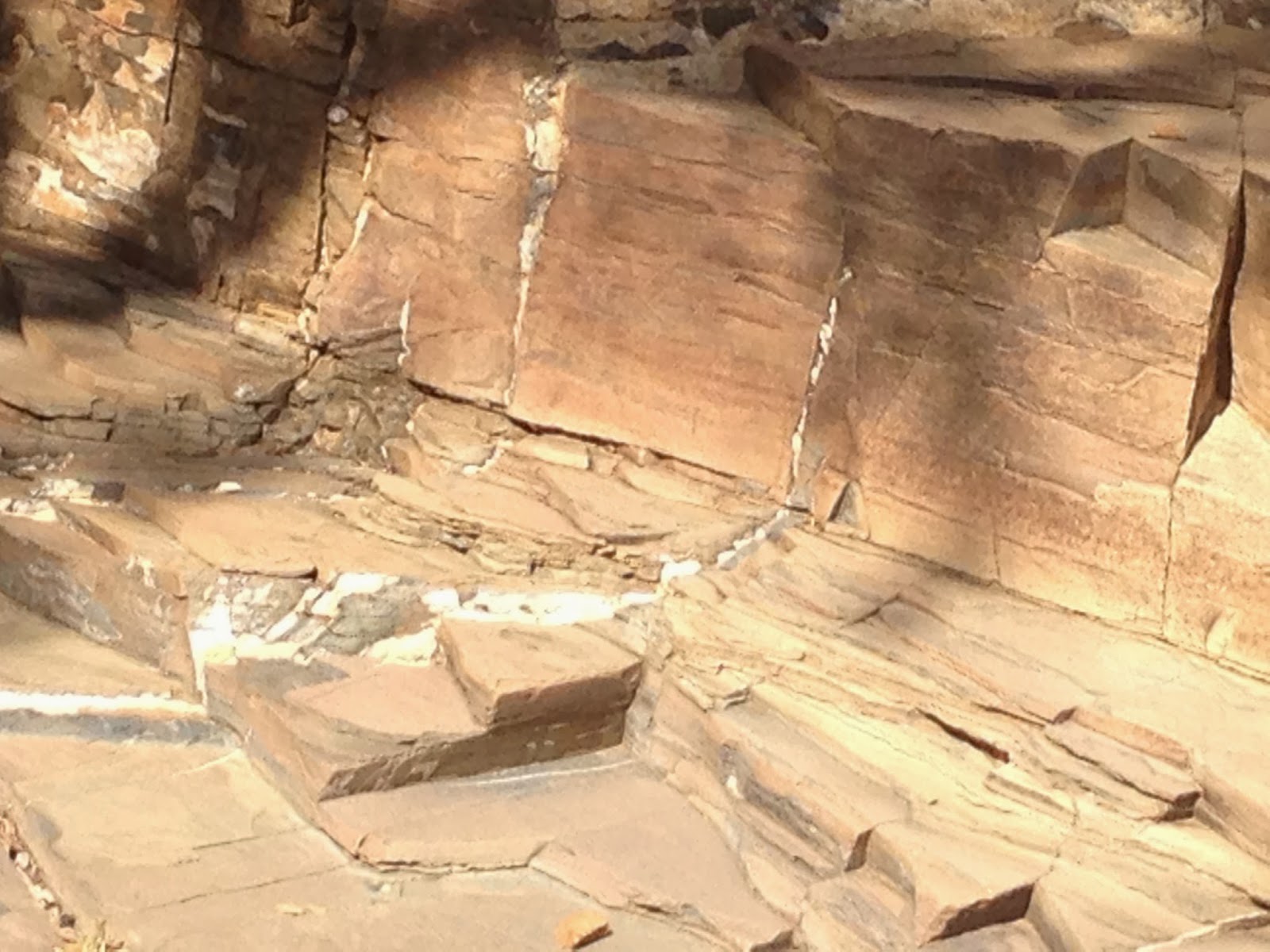Day 1 - Field Trip to Geological Sites of Significance
Videos to be added to blog at a future date
This area would be a great site as it is appropriately isolated (such that test subjects would not have contact with the outside world during isolation trials), is on basalt (found on Mars), has immediate access to a variety of environments (including gorge country and plains) to ensure that test subjects have close proximity to different terrain to test instruments/spacesuits etc
This photo is me with
Swainsona formosa (Sturt's Desert Pea)
The next photo shows a type of cyanobacteria that is able to grow in quite an extreme environment. These types of cyanobacteria are called hyperliths (when they are on the outside) and endoliths (when they are on the inside). This cyanobacteria is actually photosynthesising through the rock and was of great interest to the astrobiologists from NASA during the last Spaceward Bound Expedition in 2009. Extremophiles are of great interest to astrobiologists, who seek to establish an understanding of the genetic make-up of such life forms such that they will be identified if sampled as extinct forms on Mars. Mars Rovers also need to be able to identify the molecular components of these forms as well as seek out such forms in their unusual habitats.
The second stop was at Stubbs Water Hole, there were large conglomerate rocks that provide evidence that there was once a glacier through this area. Being able to recognise such evidence is key to studying the geology on Mars. Similar geological formations on Mars would indicate glacial activity in the past.
The photo to the right shows us the evidence that there was once significant salt content. The salt leaves angular indentations in the rock, due to its lattice structure.
A large piece of ochre! Please go to the following link for more information on ochre from my NSW Premiers Teacher Scholarship and lesson ideas! http://nswptsnhilton.blogspot.com.au/2014/02/day-twenty-nine.html
The photo to the left shows dendritic formations on rocks, these are pseudo-fossils caused by oxidation and reduction under very specific environmental conditions. The formation of these shapes on the rock would have happened at a depth of less than 4 metres in the presence of water. The formations themselves are caused by the oxidation of manganese as it comes into contact with water rising through the sedimentary rock. These formations hold great relevance to the study of Mars as their presence does indicate the presence of water not too far below the planet's surface. There have also been studies completed that indicate that there shape is influenced by the presence of microbes, just as above.
Lesson ideas for incorporating Mars Exploration can be located in my Google Drive at:
https://drive.google.com/folderview?id=0B0vhEt79wAtuVEYxYklucmVQT1k&usp=sharing














No comments:
Post a Comment